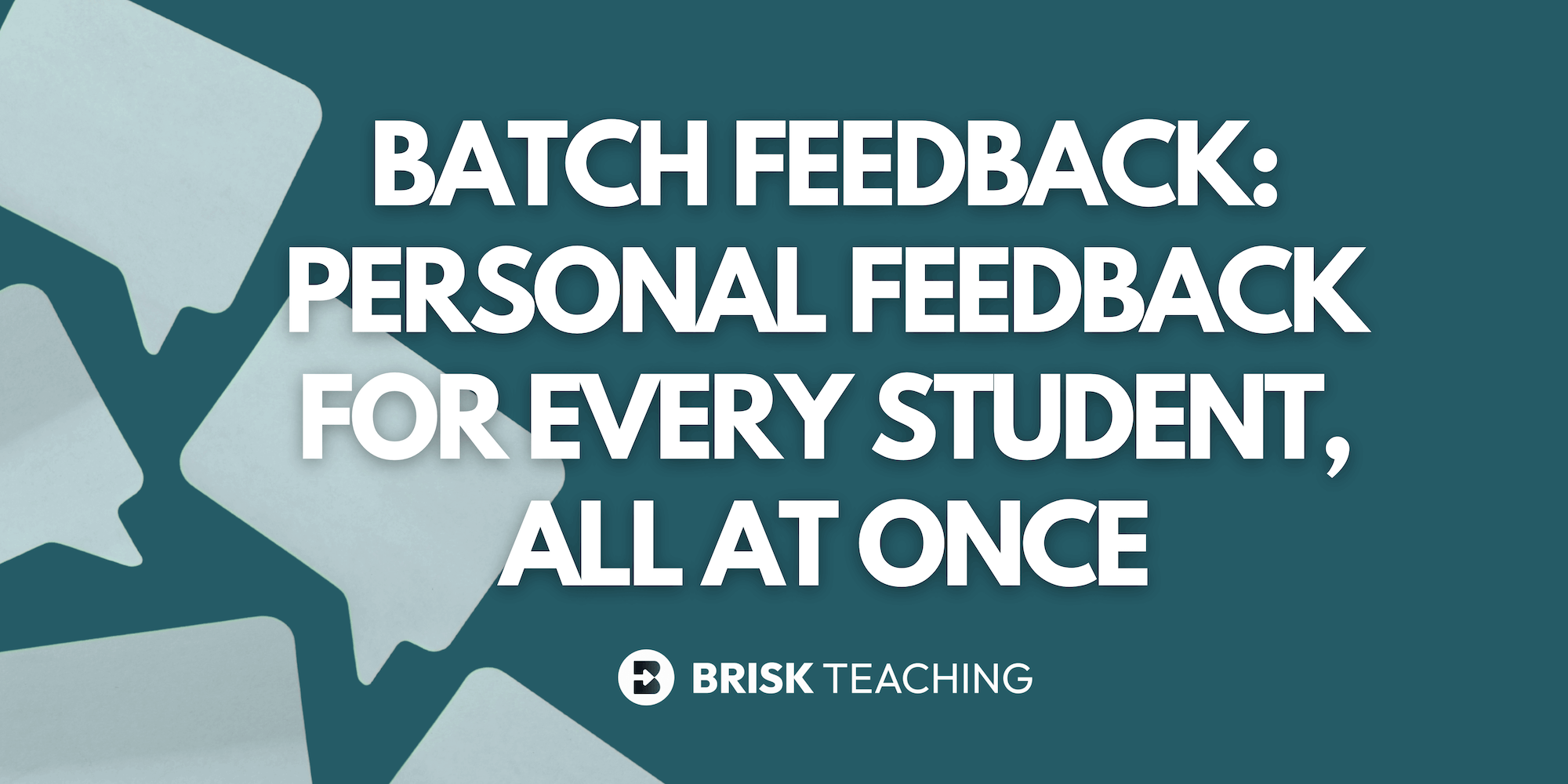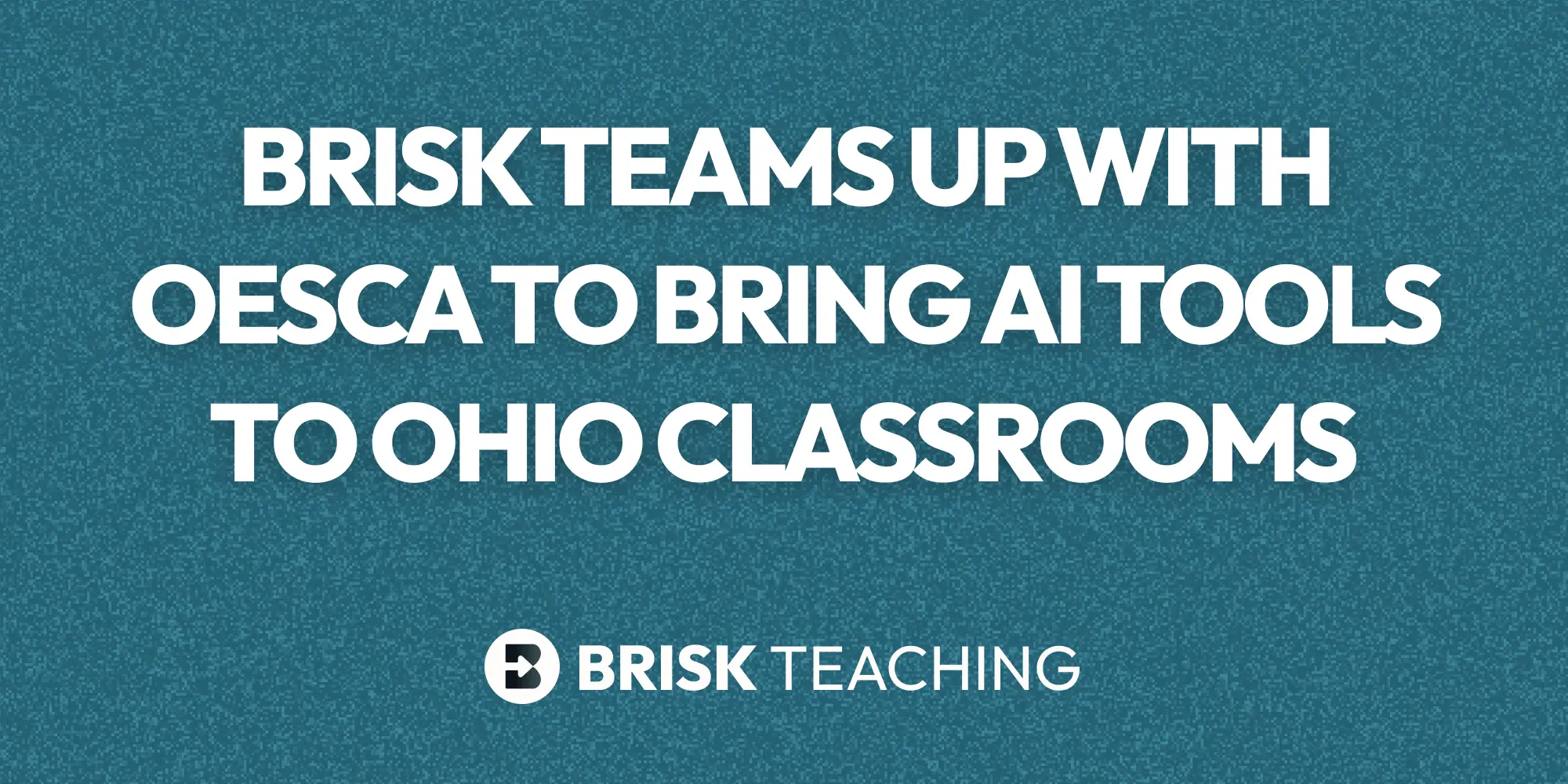It takes both art and science to unlock each child's potential. The Individualized Education Plan (IEP) goal generator plays a crucial role in ensuring personalized attention for every child’s intellectual growth journey. It's a tailored roadmap that celebrates uniqueness, builds on strengths, and addresses areas for improvement.
An AI IEP goal generator is all about inclusivity and individual progress. It customizes learning experiences to fit unique abilities and preferences, making education more engaging and effective. Learn more about how Brisk’s AI IEP goal generator promotes independence, self-esteem, and academic success.
What Is An AI IEP Goal Generator?
The IEP is a personalized document for public school children in the U.S. who need special education. Required by the Individuals with Disabilities Education Act (IDEA) ensures these children get the tailored learning experiences they need. It sets goals, lists specific services provided by the school, and outlines how progress will be measured.
An IEP is developed in collaboration between teachers, parents, and other relevant school staff. It's a dynamic plan that evolves as the student grows and changes, keeping pace with their educational needs.
Understanding IEP Basics Under IDEA
A special education program must follow several key steps under the IDEA. Here’s a simplified breakdown of the process:
Identification
Children are identified as potentially needing special education through activities or referrals for evaluation by school professionals or parents. Evaluation requires parental consent and should be completed promptly.
Evaluation
A comprehensive evaluation assesses the child's suspected disability across all relevant areas. Evaluation results determine eligibility for special education and related services. Parents have the right to request an Independent Educational Evaluation (IEE) if they disagree with the evaluation.
Determining Eligibility
Qualified professionals and parents review evaluation results to determine if the child meets IDEA's definition of a "child with a disability." Parents have the option to challenge this decision through a hearing.
Confirmation Of Eligibility
If deemed eligible, the child is entitled to special education and related services. An Individualized Education Program (IEP) must be developed within 30 days.
IEP Meeting
The school schedules and conducts an IEP meeting involving parents and relevant school personnel. Parents have the right to invite others with expertise about the child.
IEP Development
The IEP team discusses the child's needs and drafts the IEP, ensuring parental consent before services commence. Disagreements can be addressed through mediation or due process hearings.
Service Provision
The school ensures the IEP is implemented, with teachers and service providers aware of their roles. Parents receive a copy of the IEP.
Progress Monitoring
The child's progress toward IEP goals is regularly measured and reported to parents, aligning with the frequency of progress reports for nondisabled children.
IEP Review
The IEP is reviewed annually, with revisions made as needed. Parents are integral to this process, providing input and raising concerns.
Reevaluation
At least every three years, the child undergoes reevaluation to assess ongoing eligibility and educational needs, with more frequent evaluations if necessary.
Understanding these steps can help parents and educators work together effectively to support each child's unique learning journey.
Special Consideration To Take Into Account
In accordance with the child's requirements, the IEP team must address specific factors outlined by the law, including:
- Addressing behavior. If the child's behavior impedes their learning or that of others, strategies and supports must be devised to manage it effectively.
- Language proficiency. For children with limited English proficiency, language needs relevant to their IEP must be considered.
- Visual impairment. Children who are blind or visually impaired should receive instruction in Braille or alternative methods unless determined unnecessary after evaluation.
- Communication needs. If the child has communication needs, the IEP team must assess and address them accordingly.
- Hearing impairment. For children who are deaf or hard of hearing, language and communication needs, including opportunities for direct communication, must be accommodated.
- Assistive technology. The IEP team must always evaluate and address the child's requirements for assistive technology devices or services.
Why Use An AI IEP Goal Generator?
Crafting an IEP requires careful thought and detail, which can be frustrating for educators and special education professionals. But with tools like the AI IEP goal generator, the process becomes much simpler. Here’s why it’s essential:
- Efficiency - The IEP generator streamlines the process, transforming it into a swift and less complicated exercise. This frees up time for other important tasks.
- Standardization - It ensures all essential components are included in every IEP, reducing the risk of non-compliance and ensuring consistency.
- Accuracy - Mistakes are minimized with an IEP generator, ensuring precision throughout the document.
- Customizability - While standardizing the process, it allows for individual-specific goals and objectives, promoting effective planning.
- Collaboration - The IEP generator facilitates easy sharing and collaboration among professionals involved in the education plan, ensuring everyone is on the same page.
Implementing an AI IEP generator simplifies the planning and formulation phases of special needs education. It ensures accuracy, consistency, and better understanding among all involved parties, making it a valuable investment for any special education program.
How To Use Brisk’s AI IEP Goal Generator
- Download Brisk Chrome Extension for FREE. Click on the Brisk extension and select "Add to Chrome" to install it.

- Pin the Brisk extension to your Chrome toolbar for quick access. Here’s how:

- Access Brisk. Open it in Google Docs. Click on the Brisk icon in the bottom right corner of your screen.

- Click Create. Scroll to Interventions and choose between an IEP goal plan or an IEP 504 Template.

Best Uses Of Brisk’s AI IEP Goal Generator
- Student-Centered Planning. Create personalized goals, accommodations, and services to support each student's academic and developmental growth.
- Legal Compliance. Ensure IEPs meet special education laws and regulations, providing necessary documentation and support for students with disabilities.
- Collaborative Approach. Work with special education teams, parents, and students to create inclusive learning environments.
Need help with your IEPs? Download the Brisk FREE Chrome extension here.
Sample AI IEP Goal Generator Prompt
I will develop an IEP tailored to meet the specific learning needs of my [GRADE LEVEL] students with special needs. The goal will focus on enhancing their understanding of [TOPIC] in a manner that is specific, measurable, attainable, reasonable, and time-bound within [AMOUNT OF TIME].
Additional AI IEP Goal Generator Prompts
Feel free to ask the chatbot for more assistance with any aspect of the goal. For example, you can request customized lesson plans designed to support the language development of a child with autism in kindergarten. Alternatively, you can seek guidance on implementing sensory-friendly activities to engage children with sensory processing disorders during classroom instruction.
Why Do 200,000+ Teachers Love Brisk’s AI IEP Goal Generator?
Brisk's AI IEP goal generator has garnered praise from over 200,000 teachers for its unmatched efficiency and effectiveness in streamlining the special education process. With Brisk, educators can create IEPs with ease, eliminating the need to worry about compatibility issues or system constraints.
- Effortless Compatibility - Brisk works seamlessly anywhere without system limitations or compatibility concerns.
- Instant Results - Teachers can quickly create personalized IEPs, saving valuable time with Brisk's swift technology.
- Simplicity at its Best - Brisk's intuitive interface eliminates guesswork and thinking for educators.
- Utility & Impact - Users praise Brisk for its usefulness in preparing instructional materials and its remarkable simplicity.
- Rave Reviews - Educators like Matt J. commend Brisk for its simplicity, and Courtney Ring L. shares how it's a huge time-saver for creating new material and modifying old ones.
- District-Wide Impact - Districts, such as the one in Wisconsin, have seen firsthand how Brisk saves time and enhances lesson planning for teachers.
FAQs On AI IEP Goal Generator
What AI tool helps write IEP goals?
Brisk Teaching is the go-to AI-powered tool designed specifically for crafting IEP goals efficiently. It swiftly generates comprehensive sections for individualized education plans.
What are some examples of good IEP goals?
Good IEP goals cover a wide spectrum of skills and abilities essential for student development. Examples range from enhancing reading comprehension and fluency to improving communication, time management, and social skills.
How do I create a SMART IEP goal?
To create a SMART IEP goal, start by defining what you want the student to achieve. Ensure the goals are Specific, Measurable, Achievable, Realistic, and Time-bound. Break down each goal into measurable short-term steps to track progress effectively.
Can AI assist in writing an IEP?
Yes, AI can be a valuable tool in simplifying and accelerating the process of writing IEPs. By automating certain tasks, AI makes the writing process more user-friendly for educators, allowing them to focus more on individual student needs.
What are the three measurable components of an IEP goal?
The three measurable components of an IEP goal include:
- Direction of behavior - Describes the action the student will take.
- Area of need - Identifies the specific skill or area requiring improvement.
- Level of attainment - Specifies the desired level of achievement, all expressed in measurable terms.
What are short-term IEP goals?
Short-term IEP goals are manageable objectives that serve as stepping stones toward achieving long-term goals. They provide a clear roadmap for progress, allowing educators to track and evaluate the student's development over time.
Have more questions? Visit our FAQs page for additional information!
Generate Your IEPs In Seconds! Download Brisk’s Chrome Extension COMPLETELY FOR FREE Today!
Brisk’s AI IEP goal generator offers educators a powerful tool to craft tailored Individualized Education Programs for students with disabilities. By providing customization options and facilitating student-centered planning, Brisk simplifies the process of designing IEPs while ensuring compliance and fostering inclusive education. It's an essential resource for educators committed to meeting the diverse needs of their students and nurturing a supportive learning environment.
What's stopping you from taking your teaching to the next level? Download Brisk's Chrome Extension for FREE and streamline your IEP creation process. Explore over 30 tools designed to enhance teaching and learning, covering everything from lesson planning to student assessments. Stay informed as well with the latest updates and insights by visiting our What's New page. Start using Brisk today!
.webp)
.webp)






